Journal of Alcoholism & Drug Dependence
Open Access
ISSN: 2329-6488
ISSN: 2329-6488
Original Research Article - (2021)
In the cases of subjects with a chronic addictive link to multiple toxic substances, the mechanisms of behavioural self-control, the capacity for tolerance to frustration and for decision-making become fragile and negatively affected by the harmful infiltration of said substances into the brain parenchyma, being able to provoke random criminal behaviours in subjects prone to such hostile or aggressive behaviours .
Domestic violence; Alcohol cravings; Alcoholism; Aggressiveness; Social consumption
In cases of addictive association and chronic alcohol consumption, the subject affected by said psychopathological condition does not present psychic indemnity to the effects that said ethylic substance could cause on the central nervous system (CNS) [1-6].
It is well known that chronic consumption over a long time frame affects many areas of the body, such as the digestive system, the musculoskeletal system, the cardiovascular system, the liver system and the Central Nervous System (CNS). In this sense, what is considered (formally) as a "legal drug", ethylic substances or alcohol can reach a significant harmful and/or aggressive potential in the body with great damaging capacity.
As a psycholeptic substance that causes depressant effects on the CNS, it can act as a sedative enhancer and/or facilitator of the decrease or delay of impulsive behaviours. These psycholeptic substances produce sedation, relaxation and a feeling of wellbeing, affecting the attention span and causing a slowdown in the processing of information and the subject's behavioural responses [7,8].
The case involves a 40-year-old woman, a native of the Eastern Countries, with a long, clinical-psychopathological history of addiction to various ethylic substances (whiskey, vodka, rum, gin, etc.). Her behavioural pattern of use and abuse of alcohol began at the early age of 16 years, up to the present date, when she proceeded to be evaluated psychologically. Her consumption also increased until she reached the age of 30, at which age her intake was a frequent and varied combination of cognac, brandy, wine, vodka and whisky, even drinking colognes, perfumes and sanitary or pharmaceutical alcohol.
In the psychopathological examination, she referred to the following clinical-symptomatological phenomenology in relation to her addiction to alcohol:
• That, as soon as she woke up and got up in the morning, she inevitably and compulsively needed to consume alcohol, and that, when she did, she did not remember anything at all later.
• That when she consumed alcohol in abundance, later she would need to sleep.
• That she had had several admissions to hospital units for detoxification treatment, but upon discharge from the clinic, she relapsed into consumption.
• That, over a time frame of about ten years; she had been admitted to the hospital about five times in order to dissociate herself from alcohol, but without success.
• That, on several occasions, it was her mother who took responsibility for her care and looked after her, procuring specialists for her treatment.
• That she had had episodes of uncontrolled impulses during the moments in which she consumed alcohol.
• Was used to having problems associated with alcohol consumption, which she could not solve and so lost control, entering a spiral of anxieties, anguish, depression and irritability.
• In the face of problems that she had had in the family environment, she had tried to find solutions, but had been unable to do so.
• That, according to existing health documentation from clinical entities of the public sector, there were suicide attempts due to massive alcoholic ingestion and ingestion of pills.
• That, with respect to her own life, she commented that she could not control or organize it, due to her close and chronic link to addictive alcohol consumption.
As adverse psychosocial factors, the subject reported that as a young woman she suffered domestic violence from her parent (the parent also had a chronic, pathological addiction to alcohol and exercised physical/mental abuse against her mother and herself). In line with the foregoing, the subject recalled a serious episode in which her father tied her hands and feet and subsequently inflicted physical assaults and sexual abuse on her.
The judicial procedure (reason for the expert intervention) was due to an episode of domestic violence perpetrated by her sentimental partner. In a context of social consumption of ethylic substances, the couple got into a heated discussion, causing each other injuries that were important in terms of their behavioural and/or criminological severity. The acute, elevated and hostile escalating argument reached its zenith, leading to an extreme behavioural crisis with an aggressive base between them, so that both actors were, at the same time, perpetrators and victims respectively.
In order to illustrate the consequences of the serious confrontation, images are shown showing the injuries inflicted on the victim by her partner (Figures 1-4) [9,10].
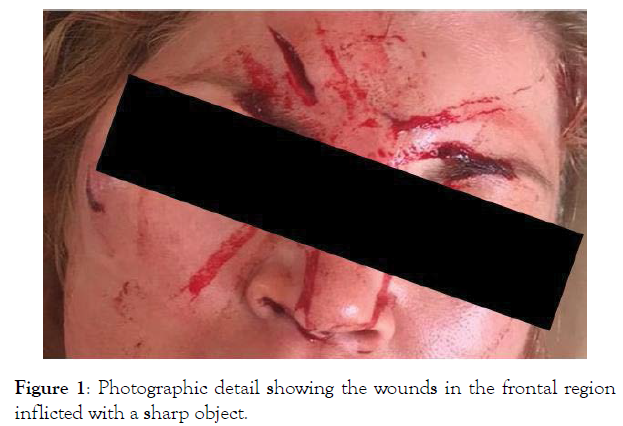
Figure 1: Photographic detail showing the wounds in the frontal region inflicted with a sharp object.
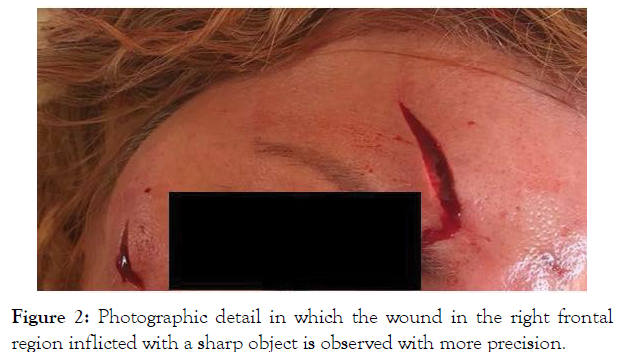
Figure 2: Photographic detail in which the wound in the right frontal region inflicted with a sharp object is observed with more precision.
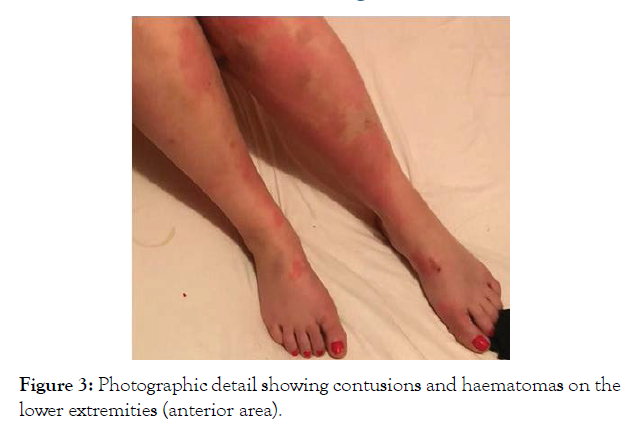
Figure 3: Photographic detail showing contusions and haematomas on the lower extremities (anterior area).
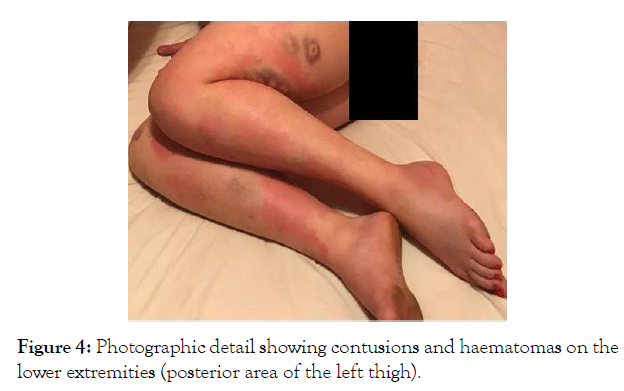
Figure 4: Photographic detail showing contusions and haematomas on the lower extremities (posterior area of the left thigh).
In order to objectify the reported psychopathological status, the Million Multiaxial Clinical Inventory (MCMI-IV version 4 of 2018) and the Davidson Trauma Scale DTS test were administered.
It should be noted, beforehand, that the results obtained in the MCMI-IV test have to be put in context, from an anthropological point of view, of the basic sociocultural condition of the subject, since she is from the Eastern Countries, and may mean that the resulting psychometric graph presents variations that could alter the interpretive order from a psychological perspective.
The test validity modifying indices show statistical significance in two scales: "Sincerity" (TB = 84), which suggests that she was not honest in the answers and "Devaluation" (TB = 80), which suggests that she presents herself in a more negative way than what she could really be. It must be based on the consideration that the profiles of subjects addicted to chronic alcohol consumption show a tendency to deceive and lie in order to be able to obtain “secondary benefits” related to obtaining the toxic substances, or with the denial of said serious degree of consumption (depending on her interests).
Regarding the areas of toxic consumption, the subject presents a score (TB = 104) in both alcohol and drug consumption scales, which suggests her link to said toxins and to the pattern of behaviour of addictive use and abuse.
The clinical personality patterns that stand out and that come to be defined by Grossman's Facets, present statistical significance in the Negativist scales (Overall score TB = 88 and subscale score TB = 85 in "Expressively resentful" and TB = 100 in "Temperamentally irritable”), Sadistic (TB general score = 80 and TB subscale score = 85 in “Eruptive architecture”) and Narcissistic (TB general score = 78 and TB subscale score = 85 in “Exploitative interpersonal”). The triad combination comes to be expressed behaviourally with a low threshold of patience and exacerbated irritability in critical situations, a low tolerance for frustration, eruptive behaviours and exploitation of interpersonal relationships. Said characteristics in the profile described correspond to a personality profile with addictive and chronic alcohol consumption (Figures 5 and 6).
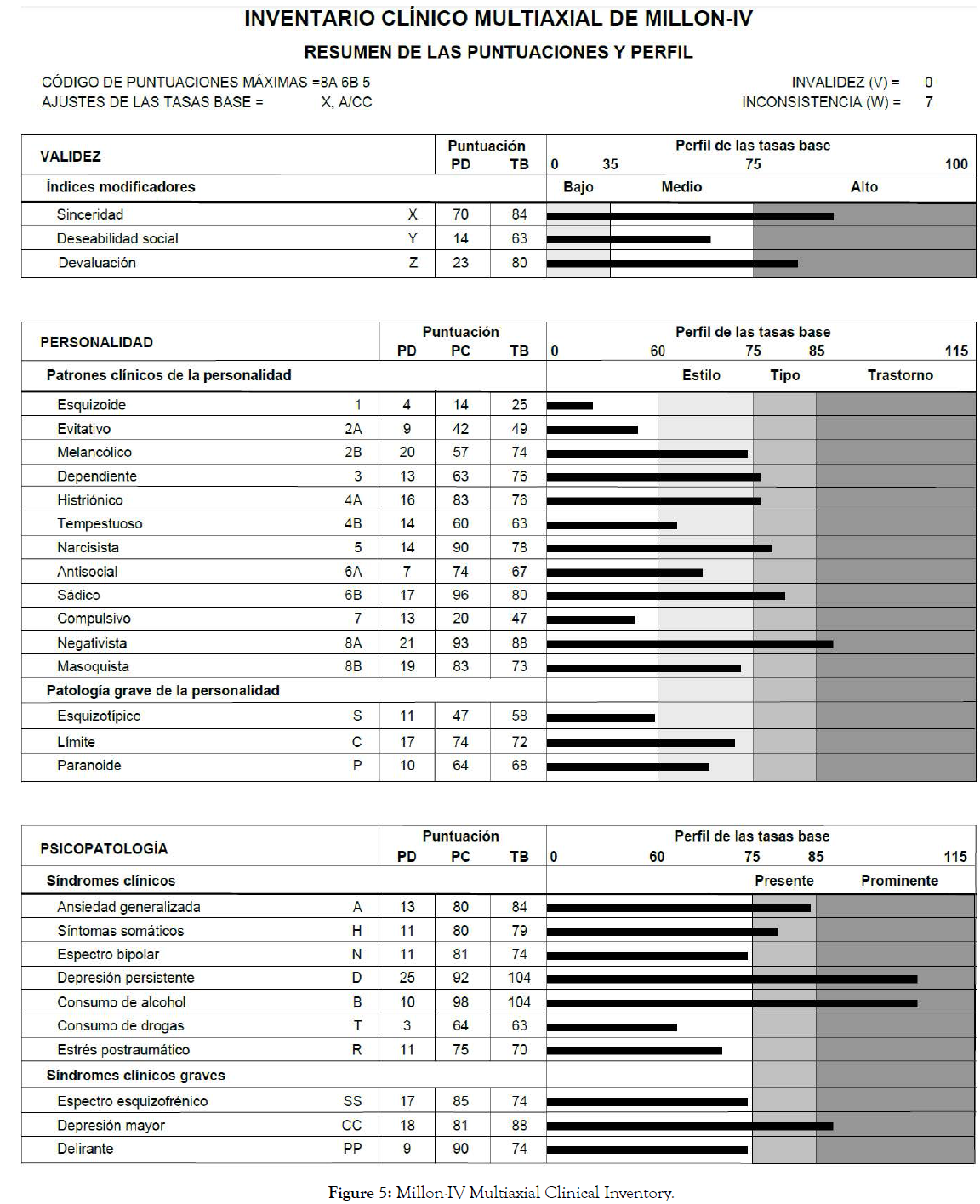
Figure 5: Millon-IV Multiaxial Clinical Inventory.
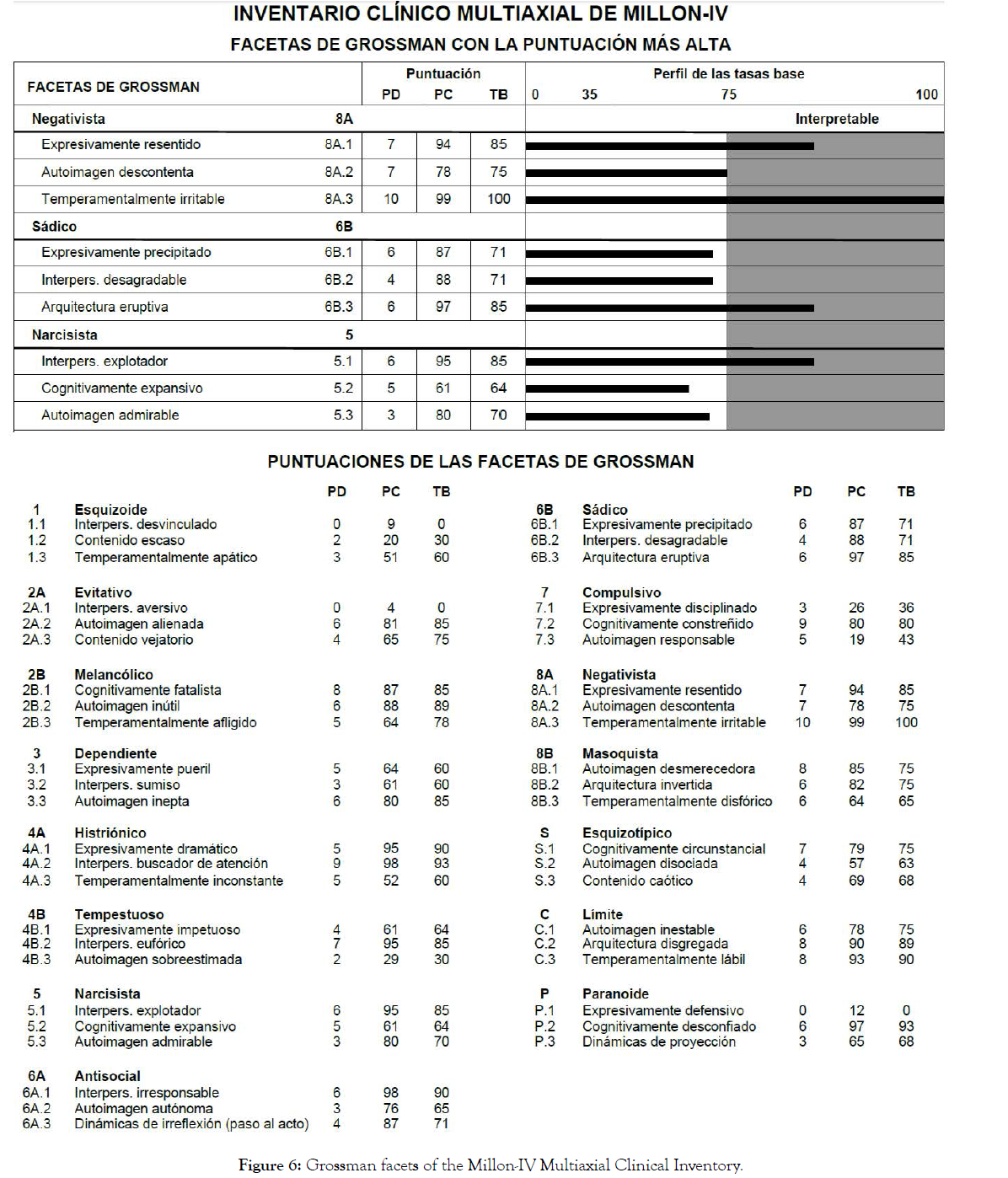
Figure 6: Grossman facets of the Millon-IV Multiaxial Clinical Inventory.
The Davidson Trauma Scale (DTS) is an instrument that assesses the intensity of psychopathological trauma (taking into account the frequency and severity of the symptoms of Post-Traumatic Stress Disorder). The trauma that the subject attests to is the following: “The mistreatment in my family since I was 22 years old. My husband beats me, he is a despot, an aggressor, and he also influences me psychologically. I have been an alcoholic since my 30s”.
In relation to what the examined person exposes as a traumatic event, the scale yields the following score: Frequency, 41/68 and Severity, 43/68, with the total score being 84/136. Although the authors consider that there is no significant cut-off point, they propose a score of 40 on the total scale (sum of Frequency score and Severity score). In the present case, the total score of 84 is significant and compatible with psychopathological trauma and/ or post-traumatic stress, or at least it suggests that the subject has symptoms of stress and/or anxiety that are traumatically reactive to the adverse events described.
The description of the case reveals the following criminological elements of forensic importance:
1. Alcohol, as a psycholeptic substance, decreases the activity of the Central Nervous System, producing depressive effects and reducing the voluntary capacity for behavioural self-control.
2. Likewise, it acts as a sedative, enhancer and/or facilitator in the reduction or delay of impulsive behaviours. They produce sedation, relaxation and a feeling of well-being, affecting the attention span, causing a slowdown in the processing of information and the subject's behavioural responses.
3. In subjects with a low irritability threshold, the harmful action of alcohol on the brain parenchyma is a facilitator for the development of behaviours prone to aggressiveness, being able to reach the point of potentially destructive behaviour against people, including property.
4. On many occasions, chronic addiction to alcohol causes pathological behaviour of an impulsive type (in "acting-out") that involves a partial and/or significant breakdown of the inhibitory mechanisms of behaviour, negatively influencing their cognitive abilities and at the same time their volitionalmotivational abilities. That is why the mechanisms of behavioural self-control, the capacity for tolerance to frustration and for decision-making become fragile and negatively affected by the harmful infiltration of alcohol on the brain parenchyma, which can lead to random criminal behaviour.
Citation: Tiffon BN, Fernández JG (2021) A Case of Social and Chronic Alcohol Use, Aggressiveness and Domestic Violence. J Alcohol Drug Depend 9: 366. doi: 10.35248/2329-6488.21.9.366.
Received: 11-Nov-2021 Accepted: 25-Nov-2021 Published: 02-Dec-2021
Copyright: © 2021 Tiffon BN, et al. This is an open-access article distributed under the terms of the Creative Commons Attribution License, which permits unrestricted use, distribution, and reproduction in any medium, provided the original author and source are credited.